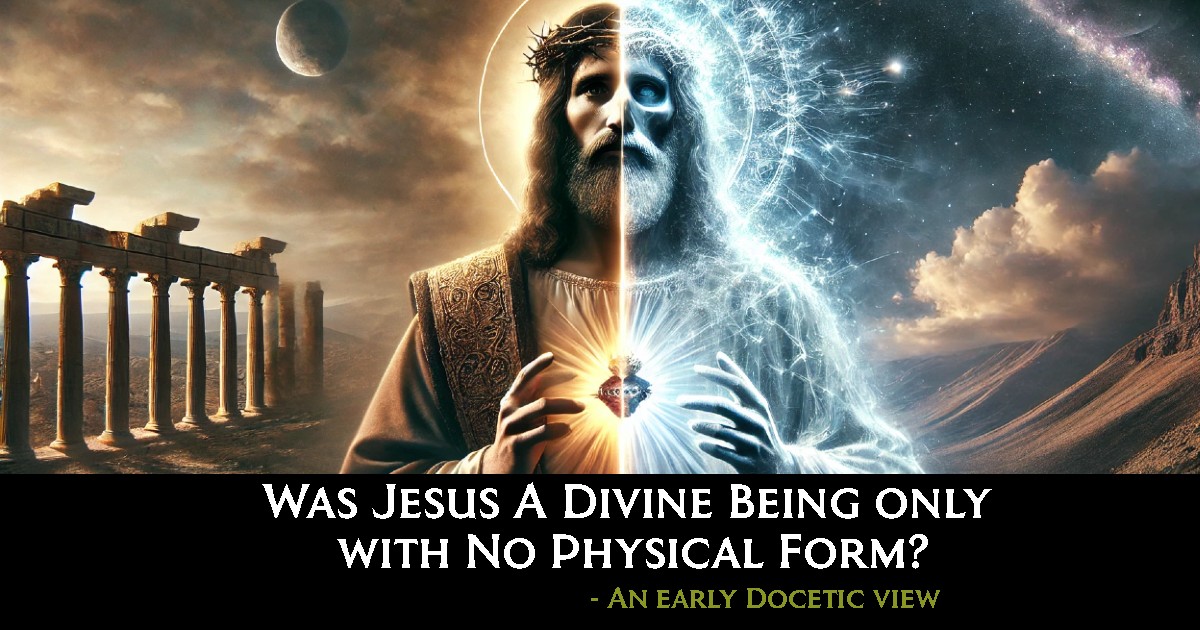In the nascent stages of Christianity, a provocative belief emerged that challenged the very foundation of the faith: the assertion that Jesus Christ did not possess a physical body. This perspective, known as Docetism, proposed that Jesus was a divine being who only appeared to be human, his physical form an illusion—a phantom.
The Essence of Docetism
Derived from the Greek word dokein, meaning “to seem,” Docetism posited that Jesus’s human form was merely a semblance without true reality. Proponents believed that Christ, being wholly divine, could not partake in the corrupt material world. Consequently, his sufferings, crucifixion, and even his resurrection were viewed as illusions crafted for human perception. This belief is highlighted in early Christian writings, such as the Gospel of Peter, where Jesus is depicted as feeling no pain during the crucifixion, emphasizing his transcendence over physical suffering.
Gnostic Perspectives on Christ’s Corporeality
Aligning with Docetic thought, various Gnostic sects held that Jesus’s physical body was not real but only “seemed” to be physical. They posited that his spirit descended upon him at baptism and departed before the crucifixion, emphasizing a dualistic view that separated the spiritual from the material. Texts like the Apocryphon of John and the Gospel of Judas reflect such interpretations, portraying a Christ who imparts secret knowledge (gnosis) to select disciples, guiding them to transcend the material world’s illusions.
Marcionism: A Phantom Savior
In the second century, Marcion of Sinope advanced a theology that depicted Jesus as a purely divine entity devoid of physical form. Marcion rejected the material world as the creation of a lesser god and contended that Christ’s appearance in human form was an illusion, reinforcing the idea of a phantom savior. His work, the Antitheses, contrasts the vengeful god of the Old Testament with the benevolent father of Jesus, underscoring the chasm between the material and spiritual realms.
Orthodox Rejection and Heresy Declarations
The mainstream Christian church vehemently opposed these interpretations. The First Epistle of John explicitly counters Docetic views by emphasizing the tangible reality of Christ: “Every spirit that acknowledges that Jesus Christ has come in the flesh is from God” (1 John 4:2). Early church fathers, such as Ignatius of Antioch in his letters to the Smyrnaeans, ardently refuted Docetism, asserting the genuine incarnation, suffering, and resurrection of Christ in the flesh. This stance was crucial in maintaining the doctrine of salvation, which hinged on the belief that Jesus fully partook in human nature to redeem it.
Implications for Faith and Doctrine
The controversy surrounding Jesus’s nature was more than theological hair-splitting; it struck at the heart of Christian soteriology. If Christ were merely a phantom, the reality of his suffering, death, and resurrection—and thus the salvation of humanity—would be called into question. The church’s denunciation of Docetism was, therefore, a defense of the tangible reality of Jesus’s redemptive work.
Conclusion
The early debates over Jesus’s corporeality reveal the diversity and intensity of thought in early Christianity. The assertion that Jesus was a phantom challenges conventional understandings of the incarnation and underscores the complexities the early church faced in defining orthodox belief.
References
- The Gospel of Peter (circa 2nd century CE)
- The Apocryphon of John (circa 2nd century CE)
- The Gospel of Judas (circa 2nd century CE)
- Antitheses by Marcion of Sinope (circa 2nd century CE)
- First Epistle of John (circa late 1st century CE)
- Ignatius of Antioch’s Letter to the Smyrnaeans (circa early 2nd century CE)
- Johnson, Douglas. The Great Jesus Debates: 4 Early Church Battles About the Person and Work of Jesus. Concordia Publishing House, 2005.
- Wilhite, David E. The Gospel According to Heretics: Discovering Orthodoxy through Early Christological Conflicts. Baker Books, 2015.
- MacCulloch, Diarmaid. Lower Than the Angels: A History of Christian Belief in the Body. Penguin Books, 2024.

